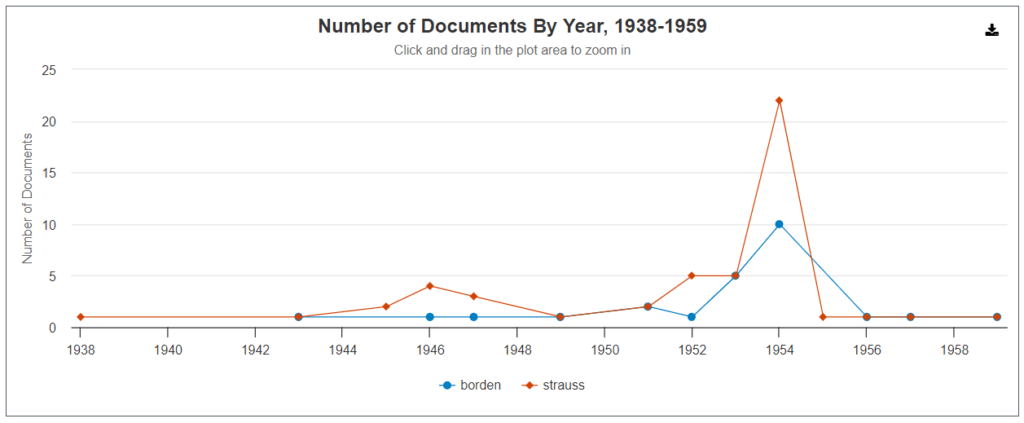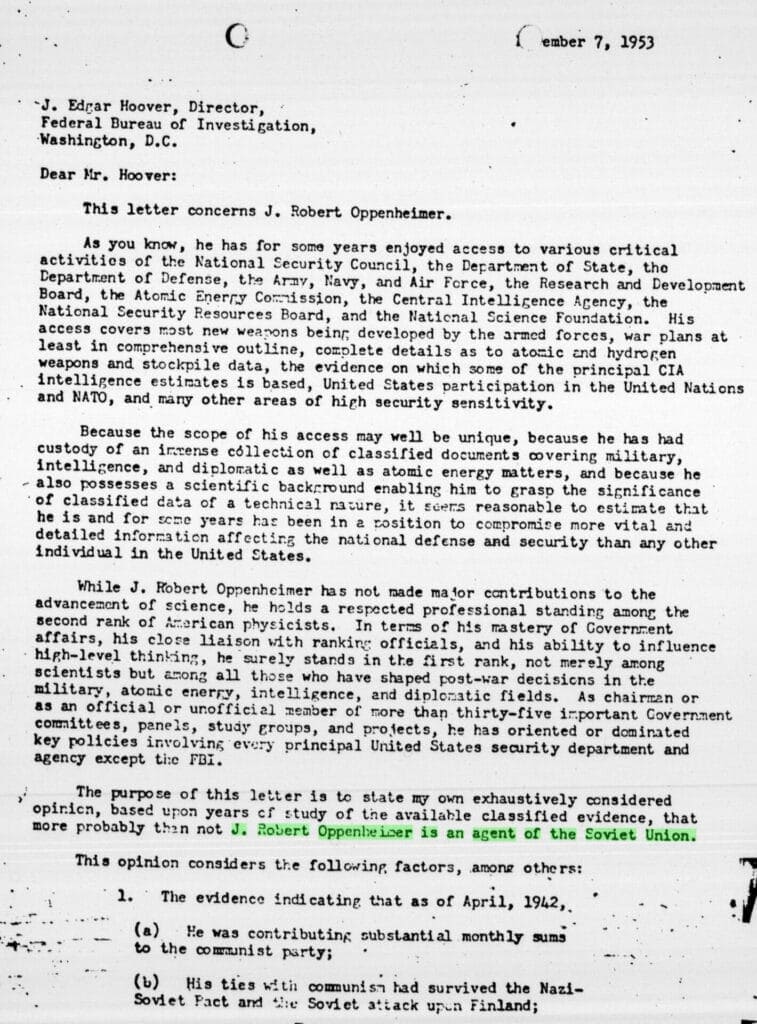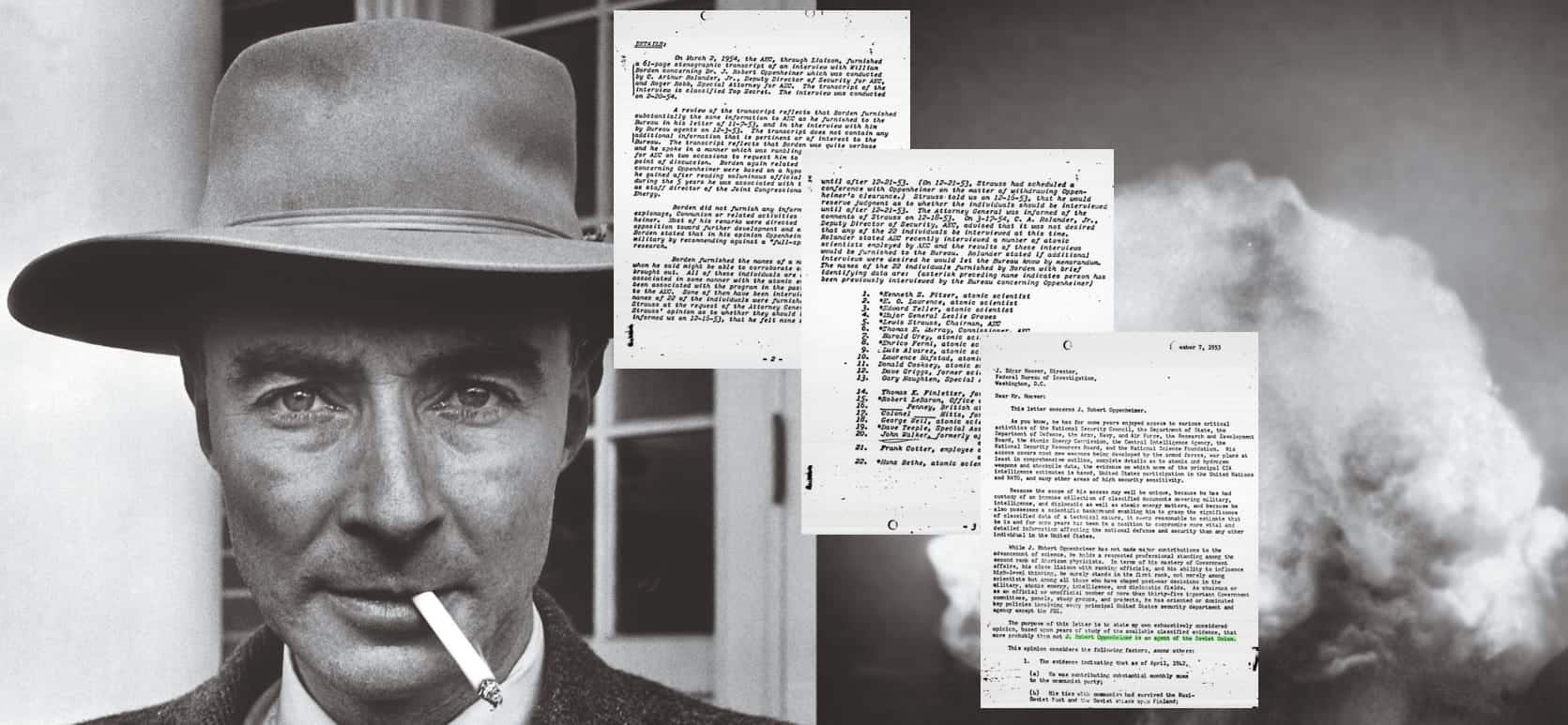│By Nicolas Turner, Gale Ambassador at Leiden University│
The release this year of Christopher Nolan’s Oppenheimer biopic has focused attention on the ‘Red Scare’ of the early 1950s in the United States, a period of history filled with all the ingredients of a thriller: double agents, secret recordings, and dramatic revelations. As Nolan’s film reminds us, however, there was also a very real human cost to the persecutions, with – in the words of the historian Ellen Schrecker – an impact on “the lives of thousands of people”.1
I have always been fascinated by this McCarthyite moment, in which the tide of history seemed to suddenly go out, leaving people stranded with beliefs that had previously been acceptable but were now framed as treasonous or worse. I was therefore thrilled to discover in Gale’s Political Extremism and Radicalism archive a treasure trove of documents that offered direct access to the experiences of those living through that dramatic moment – including, most tantalisingly of all, J. Robert Oppenheimer himself.

Reading the FBI’s secrets
The Political Extremism and Radicalism archive provides primary sources on unorthodox movements of both the left and the right across North America, Europe, and Australia throughout the twentieth century. This includes periodicals, campaign literature, government records, oral histories, and a wide range of ephemera. For those interested in the intellectual and cultural history of the post-war United States, like myself, this represents a unique resource for examining otherwise hidden moments and groups, such as the Black Panthers or the John Birth Society.
The records on Oppenheimer are in this category of history’s secrets, coming as they do from the files of the Federal Bureau of Investigation (FBI) and covering a period from 1941 to 1966 during which the Cold War was at its most intense. During these years, as viewers of the recent film will know, Oppenheimer was involved first in The Manhattan Project – to create the world’s first nuclear bomb – and then as Chair of the post-war Atomic Energy Commission’s (AEC) General Advisory Committee. It was this later position from which he was forced in 1953/4 as one of the most high-profile victims of the ‘Red Scare’. The FBI records offer, therefore, a unique insight into the thinking in the highest reaches of the US government during the pivotal events that would define not only Oppenheimer’s life but the broader course of the Cold War.
Uncovering the Past Within the Archive
Gale offers a set of unique tools for exploring this archive, making it accessible for researchers interested in any number of possible ways to approach the crucial historical events with which Oppenheimer was involved. To understand the possibilities, I began by looking at the documents in the archive and playing with Gale’s powerful filter and search capabilities, which allow you to filter on things like date, document type, and language, as well as to search for topic areas and term frequency across entire collections or various self-selected mixtures of documents.

A search through the collection for the term “communism”, for example, could almost serve as an exemplar of the moment of peak McCarthyite panic more broadly: there are very few mentions in the 1940s, with the frequency rising to around 2% of documents in 1953, and suddenly exploding to almost 14% in 1954 – the year in which Oppenheimer was finally removed from his role as Chair of the AEC’s General Advisory Committee.

Clicking on the individual years then allows a researcher to examine the documents in detail. When looking at the list, a researcher can quickly bring up the “keyword preview” to see how the search term is being used inside the document itself. This facilitates very rapid searching through large bodies of primary evidence to find relevant information – long gone are the days of laboriously reading through original documents in a drafty library reading room!
The betrayal of J. Robert Oppenheimer
I was particularly inspired by one FBI file, which contains an interview with William L. Borden, an executive director of the US Congress Joint Committee on Atomic Energy who wrote a letter in 1953 accusing Oppenheimer of being an agent of the Soviet Union. In the FBI’s summary of the interview, conducted on February 20, 1954, they found Borden to be “rambling” and more focused on Oppenheimer’s opposition to the H-Bomb than his supposed espionage. Despite this, however, Borden did provide a list of further people for the FBI to speak to, many of whom had been leading figures in the Manhattan Project.

Intriguingly the interview also references Lewis Strauss, an AEC Commissioner who we now know was orchestrating the attacks on Oppenheimer. The central roles of Strauss and Borden in the campaign against Oppenheimer can again be highlighted through a term frequency search, which highlights the extent to which their names come up in the FBI files in the early 1950s.

A search in the collection for William Borden’s name also allowed me to locate the original letter that launched the Oppenheimer investigation and which he sent to the FBI Director at the time, J. Edgar Hoover. This letter includes the infamous line, which I have highlighted below, claiming that “more probably than not J. Robert Oppenheimer is an agent of the Soviet Union”.

Quantitative and Qualitative Research Opportunities
Using the tools available through Gale it is possible therefore, to track both qualitatively and quantitively the Red Scare campaign against J. Robert Oppenheimer of the early 1950s, bringing up the key documents that defined that campaign, as well as offering more context and detail from the perspective of the FBI on the key players in the drama. Those who wanted to pursue this topic further could look at Gale’s other archives to find further angles – for example, by examining the public reaction to Oppenheimer’s dismissal in newspapers at the time.

A Foundation for Wide-Ranging Research Projects
As this brief run-through of one historical moment showcases, Gale’s advanced tools and extensive database can form the foundation of wide-ranging research projects, bringing unique and hidden stories to life in new and exciting ways, and giving every student the ability to conduct archival research quickly and effectively.
If you enjoyed reading about J. Robert Oppenheimer and the McCarthyite ‘Red Scare’, check out these posts:
- Trials, Tribunals and Tribulation: Witch-Hunts Through the Ages
- The American Civil Liberties Union – foundation, campaigns and contemporary relevance
- Writing Sensitive Personal Histories
Blog Post cover image citation: A montage of sections of Bird, Kai, and Martin J. Sherwin. “Building the Bomb.” Smithsonian, vol. 36, no. 5, Aug. 2005, pp. [88]+. Smithsonian Collections Online, https://link.gale.com/apps/doc/UTMFOZ603604138/GDCS?u=webdemo&sid=bookmark-GDCS&xid=038bdcb2 combined with images from this blog post.

